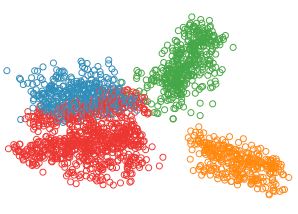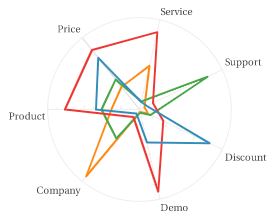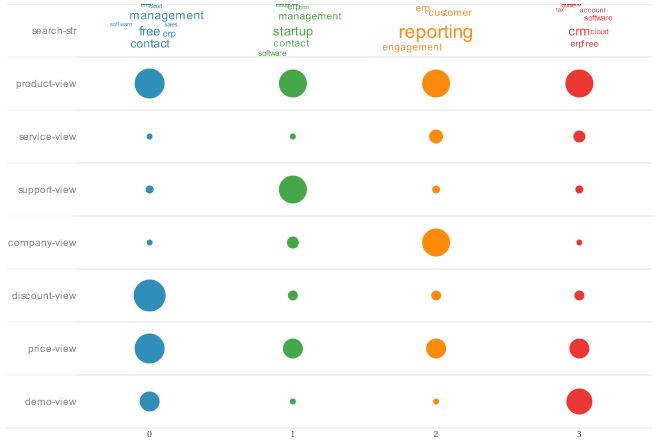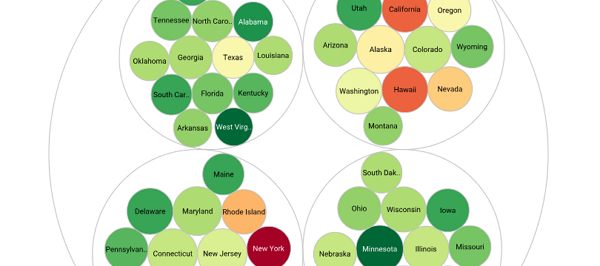Buffer Dashboard Software
Social media reporting software is crucial for analyzing the results of your various organic channels.
Buffer is a software application designed to manage accounts in social networks, scheduling posts as well as analyzing their results.
InetSoft’s dashboard software allows social media marketers to create web-based interactive reports that can take the viewer from a high-level view of marketing performance down into the details for further investigation. Advanced visualization allows for a further analysis and multidimensional exploration of data.
With instant connectivity to Buffer, as well as Google Analytics, Google Adwords, salesforce.com, and a host of other marketing oriented data sources, InetSoft’s reporting software makes it easy to measure KPI’s such as total cost per lead, incremental sales, website bounce rates, average lead scores, and more.
With a versatile and customizable social media reporting software, analyzing the engagement of website visitors and potential leads has never been easier.

Benefits of InetSoft’s Buffer Report Software
InetSoft’s social media software is easy to use, customize, and adjust to the end user’s personal preferences. The application can be up and running in weeks, not months. The reporting software makes it easy for marketing professionals to analyze various data in dashboards, visualizing metrics such as engagement on social media, and the success or lack thereof of pay-per-click advertisements. With InetSoft’s drag-and-drop interface and point-and-click controls, marketing users who lack a technical background can build interactive marketing reports, all without help from IT.
In addition to this, InetSoft’s report software provides the opportunity to mash up marketing data from a variety of sources to provide a unified view of corporate progress. Data mashup is useful for creating various marketing KPI’s, because it makes merging data from various data sources easy and effortless. Through mashup capability, users are able to drag and drop acquisition data from social media channels and mash it up with opportunity data from salesforce.com or any common CRM. Since InetSoft’s marketing report software ensures web based accessibility, these mashup driven reports reports can be shared and distributed across the company, allowing all team members to be on the same page.
Other InetSoft Features
InetSoft’s Buffer report software has many tools which allow for further data exploration. Marketing KPI’s such as email marketing engagement scores, net promoter scores, or number and quality of backlinks can all be thoroughly investigated through filtering, highlighting, and brushing. These tools allow for the studying of a specific aspect of the marketing data on the report or dashboard.
InetSoft’s marketing reporting software is also mobile-friendly and works on any web-browser, making it more accessible and versatile. With all the reports viewable through the click of a button on a phone, users will never be out of touch with marketing progress again.

Through InetSoft’s marketing report software, marketing teams will constantly be up to date and can further advance corporate goals by studying and analyzing their reports. Not only is the marketing software easy to use and learn, it can quickly be up and running. Register now to see how you can attain the perfect software for your marketing needs.
What KPIs and Metrics Do Buffer Application Users Track?
Users of Buffer typically track a variety of Key Performance Indicators (KPIs) and metrics to measure the effectiveness of their social media marketing efforts. Here are some common KPIs and metrics that Buffer application users often track:
- Engagement Metrics:
- Likes: The number of likes or reactions received on social media posts.
- Comments: The number of comments left on social media posts.
- Shares: The number of times social media posts are shared by users.
- Clicks: The number of clicks on links included in social media posts.
- Reach and Impressions:
- Reach: The total number of unique users who have seen social media posts.
- Impressions: The total number of times social media posts have been displayed, including multiple views by the same user.
- Follower Growth:
- Follower Count: The total number of followers on each social media platform.
- Follower Growth Rate: The rate at which the number of followers is increasing over time.
- Content Performance:
- Post Performance: Analyzing the performance of individual posts based on engagement metrics.
- Top Performing Content: Identifying the most engaging and effective content types and topics.
- Content Reach: Measuring the reach and visibility of different types of content.
- Conversion Metrics:
- Click-Through Rate (CTR): The percentage of users who click on a link included in a social media post.
- Conversion Rate: The percentage of users who complete a desired action (e.g., making a purchase, signing up for a newsletter) after clicking on a link in a social media post.
- Audience Insights:
- Demographics: Understanding the demographics of the audience, including age, gender, location, and interests.
- Audience Growth: Tracking changes in the size and composition of the social media audience over time.
- Customer Support Metrics:
- Response Time: The average time taken to respond to customer inquiries or comments on social media platforms.
- Customer Satisfaction (CSAT): Surveys or feedback scores measuring the satisfaction level of customers interacting with the brand on social media.
- Social Media Platform Performance:
- Platform-Specific Metrics: Metrics specific to each social media platform, such as retweets on Twitter, shares on Facebook, or pins on Pinterest.
- Platform Engagement Rate: The rate at which users interact with content on each social media platform.

